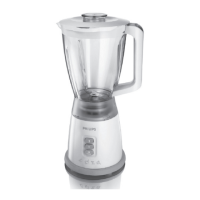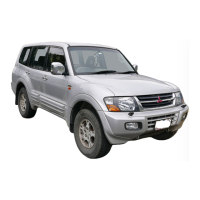HEATER, AIR CONDITIONER AND VENTILATION ± On-vehicle Service
55-12
24. Fix the engine speed at 1,500 r/min.
25. Tighten the handle of the adaptor valve (valve open) to
charge the required volume of refrigerant.
Caution
If the service can is inverted, liquid refrigerant may
be drawn into the compressor damaging it by liquid
compression. Keep the service can upright to ensure
that refrigerant is charged in gas state.
26. After charging with refrigerant, turn the handle of the
adaptor valve back all the way (valve closed).
27. Tighten the charging valve handle (valve closed).
Remove the quick joint (for low-pressure) from the
low-pressure service valve.
NOTE
If the service can is not emptied completely, keep the
handles of the charging valve and adaptor valve closed
for the next charging.
CORRECTING LOW REFRIGERANT LEVEL IN CASE THE
SERVICE CAN IS USED.
1. Install the charge valve with the handle turned all the
way back (valve open) to the service can.
2. Install the adaptor valve with the handle turned all the
way back (valve close) to the charging valve.
3. Connect the charging hose (blue) to the adaptor valve.
4. Connect the charging hose (blue) to the quick joint (for
low-pressure).
5. Tighten the handle of the charge valve (valve close), and
pierce the service can.
6. Turn the handle of the adaptor valve to bleed the air.
7. Install the quick joint (for low-pressure) to the low-pressure
service valve.
NOTE
The low-pressure service valve should be connected to
the suction hose.
Valve open
Valve close
Service can
(Refrigerant
container)
Charge valve
Adaptor valve
Charging hose (blue)
Quick joint (for low-pressure)
Quick joint
(for low-pressure)
Low-pressure
service valve

